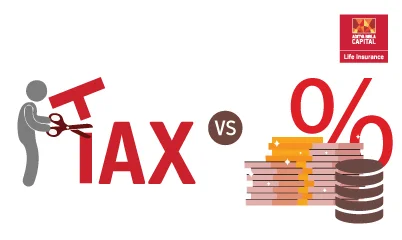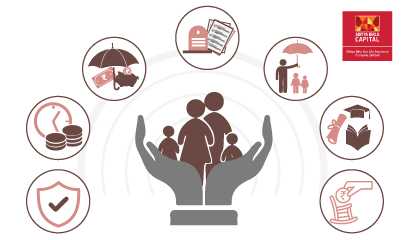How to Pay Income Tax Online?


Get Guaranteed Returns After a Month^
Unlock the Power of Smart Investment!


-
 Table of Contents
Table of Contents- How Can I Pay my Income Taxes Online?
- Eligibility for Online Tax Payment
- How Online Tax Payments Operate
- What Advantages Can Online Tax Payments Offer?
- How Can I Pay My Income Tax in Person?
- How Do I Disclose Income Tax Paid in My Itr?
- What Exactly is Advance Tax?
- How Do You Compute Advance Tax?
- How Can You Claim Deductions And Exemptions In The ITR?
- Why Should You Pay Your Income Tax Electronically?
- Is It Required To E-Pay Or Pay Taxes Online?
- Self-Assessment Tax: What Is It?
- Why Is Self-Assessment Tax (Sat) Required?
- What Should You Do If You Choose The Incorrect Assessment Year?
- Who Is Required to Submit an ITR?
- What Exactly Is 26as?
- Conclusion
- FAQs
How Can I Pay my Income Taxes Online?
Eligibility for Online Tax Payment
How Online Tax Payments Operate
The following factors, which are listed in further detail below, must be present for tax payments to be made online:
What Advantages Can Online Tax Payments Offer?
How Can I Pay My Income Tax in Person?
How Do I Disclose Income Tax Paid in My Itr?
What Exactly is Advance Tax?
How Do You Compute Advance Tax?
How Can You Claim Deductions And Exemptions In The ITR?
Why Should You Pay Your Income Tax Electronically?
Is It Required To E-Pay Or Pay Taxes Online?
Self-Assessment Tax: What Is It?
Why Is Self-Assessment Tax (Sat) Required?
What Should You Do If You Choose The Incorrect Assessment Year?
Who Is Required to Submit an ITR?
The following are the numerous ITR forms and their application to taxpayers who must submit an ITR:
Income tax filing is accessible on Income Tax India's e-filing website. You may submit an ITR by logging into your account and going to the e-filing website. The Income Tax Department makes income tax filing a straightforward and uncomplicated procedure possible.
What Exactly Is 26as?
Conclusion
FAQs
If a business partner has no income from the firm in the form of interest, salary, etc., and only exempt income in the form of a share of the firm's profit, he must use Form ITR-3 and not Form ITR-2.
Taxpayers may offer their income tax returns by utilising the e-filing application. The utility may be obtained by visiting www.incometaxindiaefiling.gov.in.
However, in some instances, actions might be commenced even after six years. Therefore, keeping a copy of the return for as long as feasible is best. Furthermore, with the advent of e-filing, saving a copy of the income tax return is relatively straightforward.
This self-assessment is sent to the Department via the submission of the income tax return. Only then does the government acquire ownership of the taxes you have paid. Return filing is crucial for this procedure and has therefore been made obligatory. Failure will result in a penalty.
About Author
for Salaried Individuals¹
-
Disclaimer
ABSLI Salaried Term Plan (UIN:109N141V01) is a non-linked non-participating individual pure risk premium life insurance plan; upon Policyholder’s selection of Plan Option 2 (Life Cover with ROP) this product shall be a non-linked non-participating individual savings life insurance plan.
1LI Age 21, Male, Non Smoker, Option 1: Life Cover, PPT: Regular Pay, SA: ₹ 1 Cr., PT: 10 years, Premium paying term: 10 years, Annual Premium: ₹ 5900/- ( which is ₹ 491.66/month) Premium exclusive of GST. On death, 1 Cr SA is paid and the policy terminates.
ADV/9/22-23/1584
Subscribe to our Newsletter
Get the latest product updates, company news, and special offers delivered right to your inbox
Thank you for Subscribing
Stay connected for tips on insurance and investments

 Home Loans
Home Loans
 Personal
Loans
Personal
Loans
 SME Loans
SME Loans
 Business Loans - Udyog
Plus
Business Loans - Udyog
Plus
 Loan against Securities
Loan against Securities
 Mutual Funds
Mutual Funds
 Stock and
Securities
Stock and
Securities
 Portfolio
Management Services
Portfolio
Management Services
 Pension Funds
Pension Funds
 Life
Insurance
Life
Insurance
 Health
Insurance
Health
Insurance
 Wellness
Solutions
Wellness
Solutions
 Pay Bills
Pay Bills
 Pay anyone
Pay anyone
 Pay on call
Pay on call
 Payment
Lounge
Payment
Lounge
 ABC Credit
Cards
ABC Credit
Cards

 1800-270-7000
1800-270-7000









